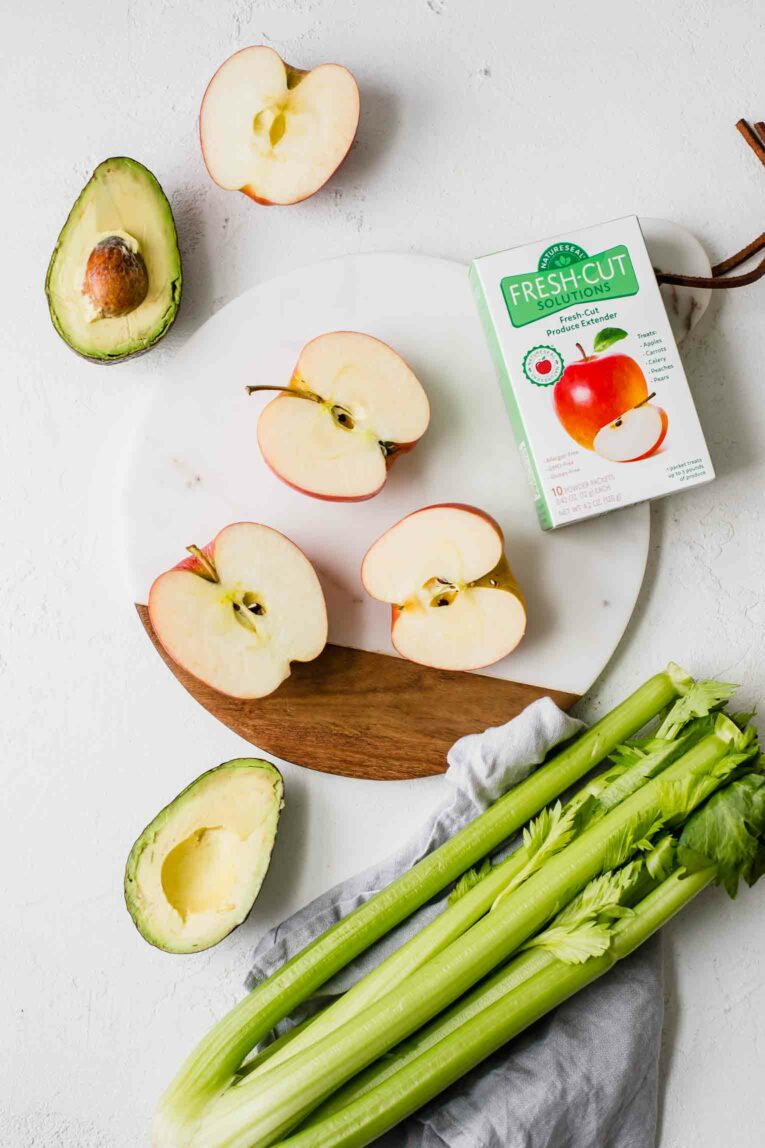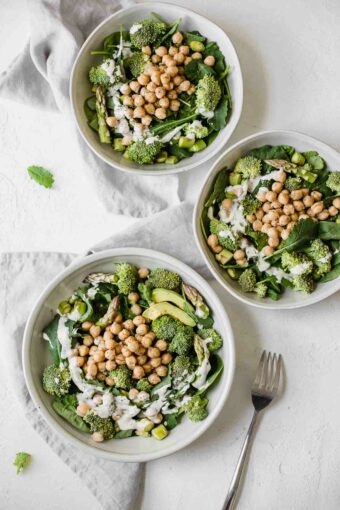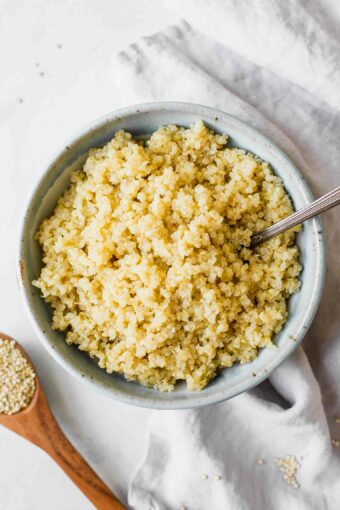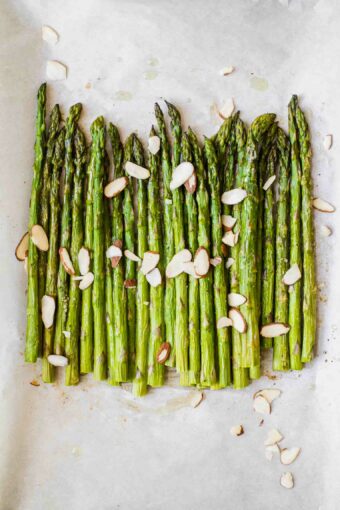This post is sponsored by NatureSeal.
6 Ways To Keep Produce Fresh
This post may contain affiliate links, please see our privacy policy
We’ve all gotten a little over-ambitious at the grocery store, bought way more fruit than needed, or have forgotten about the vegetables in the back of the fridge. It happens to the best of us, right? Today I’m sharing some of my favorite ways to keep whole and fresh-cut produce fresh longer for healthy eating!

As a busy mom who makes healthy recipes for a living (and for fun, and for family, and for all the things!), this topic is near and dear to my heart. It’s easy to forget about produce or have leftover amounts of fruits and veggies that need to be kept fresh for just a little bit longer!
If you’re wanting to extend the shelf life of freshly purchased produce, these tips and tricks are perfect for maximizing the life of your produce and starting the year off in a healthy way. Here are six brilliant ways to keep produce fresh, reduce food waste, and make the most of your groceries!

In this post
- How long does fresh produce last?
- 9 ways to keep produce fresh
- Tips for reducing food waste
- More posts you’ll love
How long does fresh produce last?
Fresh produce lasts different amounts of time. In general, many fruits and vegetables last about one week, with others lasting up to a couple of months. It’s important to store produce properly so that it can stay fresh as long as possible!

Tips for keeping fresh-cut produce fresh
1. Use NatureSeal® Fresh-Cut Solutions Fresh-Cut Produce Extender.
NatureSeal® Fresh-Cut Solutions Fresh-Cut Produce Extender is a great way to keep your fresh-cut produce looking and tasting fresh! I’m loving NatureSeal for fresh-cut apples, carrots, celery, pears, and peaches. It can minimize browning for up to one week!
This simple blend of vitamins and minerals is amazing because it inhibits the respiration and the oxidation process to help keep produce looking fresh. It maintains the natural texture and color of fresh-cut produce and doesn’t alter the flavor or leave an aftertaste. Perfect for keeping fresh-cut produce on hand and ready to go for quick and easy snacking!
To use, wash your whole produce and set aside. Add a packet of NatureSeal Fresh-Cut Solutions Fresh-Cut Produce Extender to a resealable bag or a bowl with a cover, add 1/2 cup of cold water, and shake until the powder dissolves. Cut the produce, immediately place in the solution and shake, covering all cut pieces of produce with the solution. Once every piece is covered, drain and store in a sealed container in the fridge for up to one week!

When produce is pre-cut and ready to go, it’s more likely that you’ll actually eat it keeping it from going to waste. I’m loving using NatureSeal for keeping snack-ready fresh-cut produce on hand!
2. Use NatureSeal for delicate avocado and guacamole.
Avocado can be especially tricky since it browns so quickly after it’s cut. NatureSeal has another great product to help in these delicate situations called NatureSeal® Fresh-Cut Solutions for Guacamole and Avocado! It minimizes browning for up to five days for guacamole and 10 hours for cut avocado.
For guacamole, simply mix the NatureSeal powder into the avocado pulp and blend with a hand mixer. For avocado, dissolve a packet of NatureSeal in 2/3 cup of cold water, immerse the sliced avocado for 10 minutes, drain, and refrigerate in an airtight container.

Tips for keeping whole produce fresh
3. Store fruit and vegetables in the refrigerator.
Should fresh produce be refrigerated? While it’s best to keep unripe produce at room temp, bring ripe produce into the fridge to keep it fresh longer! Aside from bananas, onions, garlic, tomatoes, and potatoes, most produce can last in the refrigerator for a decent amount of time. This is my #1 tip for keeping produce fresh!
4. Store select produce in open containers.
If you choose to pre-wash your fruits and vegetables, it’s a good idea to store some of them (such as berries and grapes) in open containers without a lid. Storing produce in open containers keeps it dry, fresh, and more enticing to eat. This is essential for making fruits and vegetables last longer!
5. Wrap greens and herbs in a dry towel.
How should you store greens and herbs? Wash them, dry them, and then wrap them in a dry towel. Store in a resealable plastic bag or container in the refrigerator to keep them from drying out!
6. Isolate gas-producing produce.
Apricots, bananas, cantaloupe, honeydew, potatoes, and tomatoes are all ethylene producing foods. Since ethylene gas can cause premature ripening in certain produce, it’s important to isolate these whole fruits and vegetables from other produce in order to prevent food from spoiling too quickly!

Tips for reducing food waste
What if the fruits and veggies in your fridge are about to go bad? Here’s what you can do to reduce food waste:
- Have too much produce on hand? Store half of it in the freezer for the following week!
- Get creative and use your produce in recipes, like a Veggie-Loaded Chili or Enchiladas.
- Use NatureSeal on fresh-cut produce as soon as you get home from the store to have an easy, convenient snack that will last up to a week.
- Use a meal planner to plan ahead and only buy what you need.
Need more motivation to actually eat fruits and vegetables? Store them in plain sight! Keep them at the top and center of your refrigerator, in clear containers or bags, and have them ready to go. This is a great tip for reducing food waste!




Erica Hopper says:
Wow! So much great info here! Thank you!
Deborah Brooks says:
I hate it when my veggies and fruits go bad too quickly. Especially the avocadoes! Thanks for the great tips